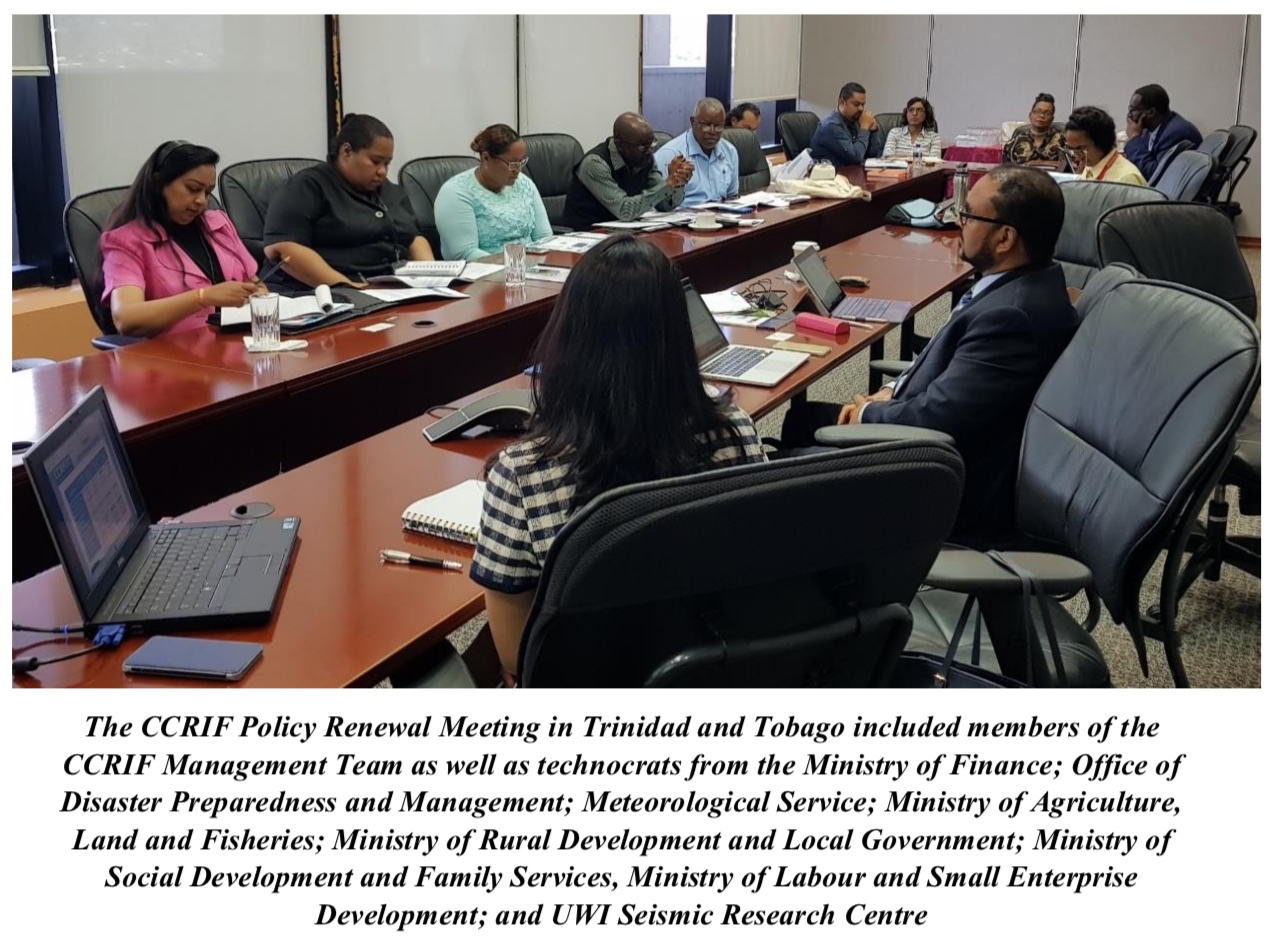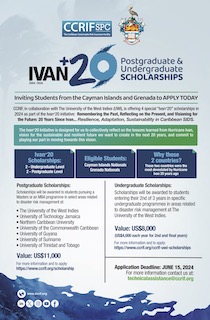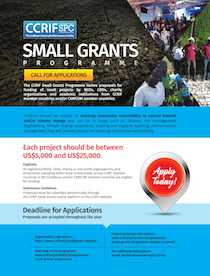Grand Cayman, Cayman Islands, October 31, 2018. CCRIF SPC (formerly the Caribbean Catastrophe Risk Insurance Facility) announced today that for the second year in a row, Trinidad & Tobago received a payout on its Excess Rainfall policy following a period of heavy rainfall in October. The Government received a payout of US$2,534,550 (approximately TT$17 million) due to heavy rains between October 18 and 20 2018.
Trinidad & Tobago has been a member of CCRIF since 2007 and has purchased CCRIF policies for tropical cyclones and earthquakes every year since then. Starting in 2017, the Government began purchasing coverage for Excess Rainfall (XSR) and has two separate XSR policies in place – one for Trinidad and one for Tobago. Since purchasing its first excess rainfall policy in 2017, the Government has received two payouts totaling approximately US$9.5 million (TT$64 million) – one in October 2017 when the Government received a payout of US$7,007,886 following an excess rainfall event and this current payout.
CCRIF is able to make rapid payouts because its insurance products are parametric. This means that payments are made based on the intensity of an event (in this case the volume and distribution of rainfall) and the amount of loss caused by the event calculated in a pre-agreed model. The hazard levels are applied to pre-defined government exposure to produce a loss estimate. The modelled loss estimate is then compared to three key elements - attachment point, exhaustion point, and ceding percentage - in the country’s policy to determine if the policy is triggered and if so, the value of the payout. These three elements are selected by the government for each policy (earthquake, tropical cyclone and/or excess rainfall) purchased based on the country’s risk profile and the amount of premium the government pays.
The attachment point is akin to a deductible in a traditional insurance policy and is the value of modelled losses that will trigger the policy – therefore if the modelled losses from an event are equal to or greater than the attachment point, the policy is triggered. The policy’s exhaustion point is the value of the modelled losses that will result in the maximum payout under the policy. The ceding percentage is the fraction of losses covered by the policy (i.e. between the exhaustion point and attachment point) that are transferred to CCRIF and determines the policy’s coverage limit or maximum payout. Payout amounts increase with the level of modelled losses, up to the coverage limit.
Each year, prior to the start of a new policy year in June, CCRIF meets with its member governments to discuss details of the CCRIF coverage they wish to purchase for the upcoming year and present updates and information related to model changes and enhancement, the full range of CCRIF’s products and services as well as new products being developed while at the same time seeking to enhance members’ understanding of the importance of risk transfer and its relationship with financial protection and sustainability. CCRIF met with the Government of Trinidad and Tobago in May of this year.

This payout to the Government of Trinidad & Tobago brings the total CCRIF payouts to date to almost US$139 million to 13 member governments – all made within 14 days of the event.
About CCRIF SPC: CCRIF SPC is a segregated portfolio company, owned, operated and registered in the Caribbean. It limits the financial impact of catastrophic hurricanes, earthquakes and excess rainfall events to Caribbean and – since 2015 – Central American governments by quickly providing short-term liquidity when a parametric insurance policy is triggered. It is the world’s first regional fund utilising parametric insurance, giving member governments the unique opportunity to purchase earthquake, hurricane and excess rainfall catastrophe coverage with lowest-possible pricing. CCRIF was developed under the technical leadership of the World Bank and with a grant from the Government of Japan. It was capitalized through contributions to a Multi-Donor Trust Fund (MDTF) by the Government of Canada, the European Union, the World Bank, the governments of the UK and France, the Caribbean Development Bank and the governments of Ireland and Bermuda, as well as through membership fees paid by participating governments. In 2014, an MDTF was established by the World Bank to support the development of CCRIF SPC’s new products for current and potential members, and facilitate the entry for Central American countries and additional Caribbean countries. The MDTF currently channels funds from various donors, including: Canada, through the Department of Foreign Affairs, Trade and Development; the United States, through the Department of the Treasury; the European Union, through the European Commission, and Germany, through the Federal Ministry for Economic Cooperation and Development. In 2017, the Caribbean Development Bank, with resources provided by Mexico, approved a grant to CCRIF SPC to provide enhanced insurance coverage to the Bank’s Borrowing Member Countries that insure through CCRIF against tropical cyclone, earthquake and excess rainfall risks.
20 Member Governments
Caribbean: Anguilla, Antigua & Barbuda, Barbados, Belize, Bermuda, British Virgin Islands, Cayman Islands, Dominica, Grenada, Haiti, Jamaica, Montserrat, St. Kitts & Nevis, Saint Lucia, Sint Maarten, St. Vincent & the Grenadines, The Bahamas, Trinidad & Tobago and Turks & Caicos Islands
Central America: Nicaragua






